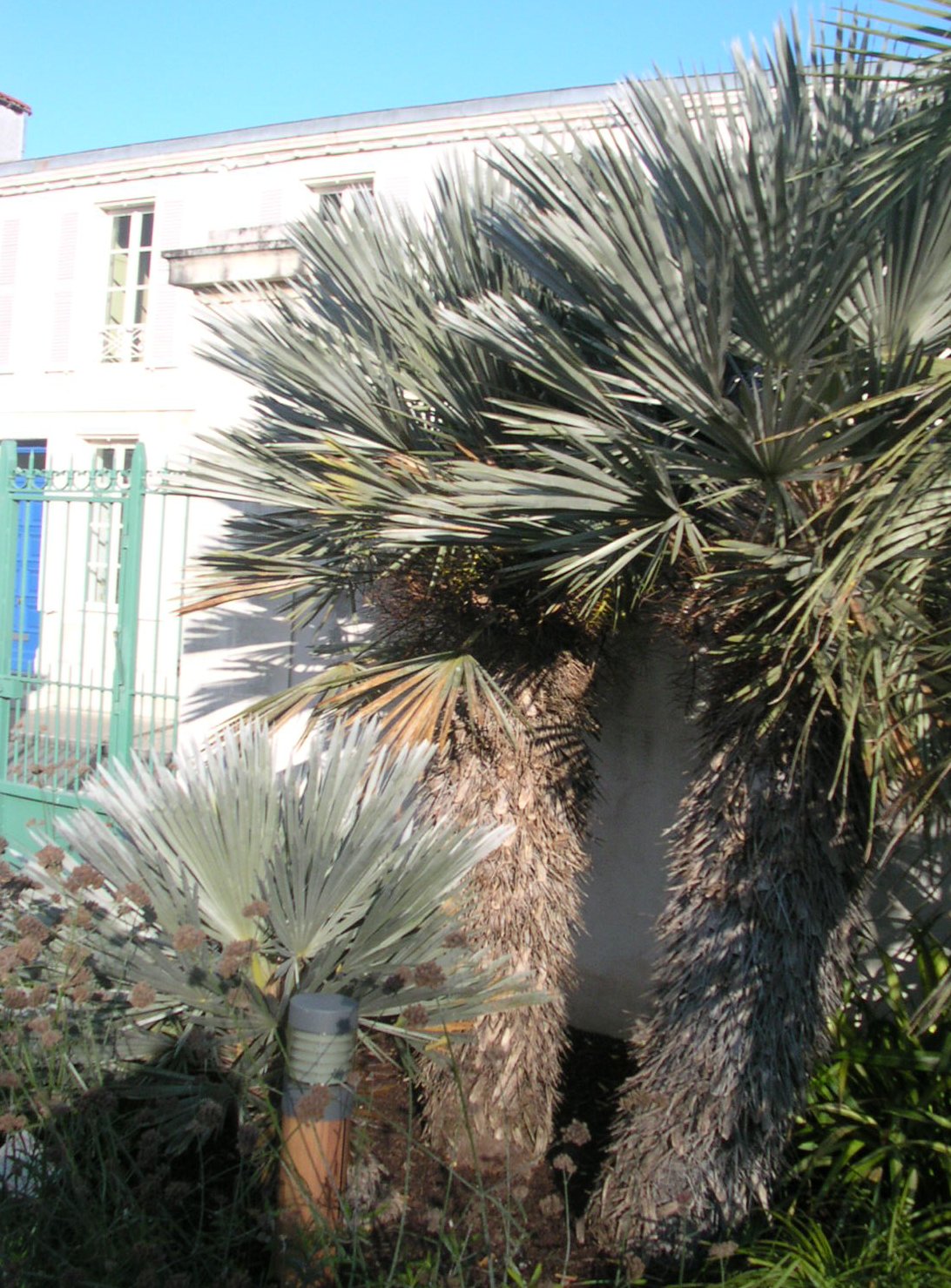- Trithrinax
taxobox

image_caption = "Trithrinax campestris" in a garden, grown as ornamental palm
regnum =Plantae
unranked_divisio =Angiosperms
unranked_classis =Monocots
unranked_ordo =Commelinids
ordo =Arecales
familia =Arecaceae
subfamilia =Coryphoideae
tribus =Corypheae
genus = "Trithrinax" [Martius, Historia Naturalis Palmarum 2:149. 1837. Type:"T. brasiliensis"] |"Trithrinax" is a genus of few
flowering plant s in theArecaceae family, that belong to the Coryphoideae subfamily, a not very evolved lineage. The name is derived of ancient greek, where "tri" means three, and "thrinax" trident. It was named as such in 1837 byCarl Friedrich Philipp von Martius a Germanbotanist and explorer. [Moore, H. E., Jr. 1963. An annotated checklist of cultivated palms.]Trithrinax species are quite spiny fan palms native to
South America . They are also rustic, tough trees, resistant to cold, heat, wind, drought, poor soils and other adverse environmental conditions. They germinate fast but their growth is distinctively slow.Riffle, Robert L. and Craft, Paul (2003) "An Encyclopedia of Cultivated Palms". Portland: Timber Press. ISBN-10: 0881925586 / ISBN-13: 978-0881925586]pecies
*"
Trithrinax brasiliensis " Mart., Hist. Nat. Palm. 2: 150 (1837).
*"Trithrinax campestris " "caranday palm". (Burmeist.) Drude & Griseb., Abh. Königl. Ges. Wiss. Göttingen 24: 283 (1879).
*"Trithrinax schizophylla " Drude in C.F.P.von Martius & auct. suc. (eds.), Fl. Bras. 3(2): 551Description
Common features of any Trithrinax specimen are:
*"Flowers": Inflorescences, in the order of hundreds of units. Threesepals , threepetals , six stamens and threecarpels .
*"Stem": Dead foliage is kept as a thick and spiny coat around it.
*"Leaves": Fan shaped, composed of strong resistant fibers.
*"Shoot s": Red coloured.Habitat
Trithrinax species are spread along vast subtropical zones of South America:
Bolivia ,Brazil ,Paraguay ,Uruguay ,Argentina . They prefer dry, open or forest clearing, environments, with moderate to cold winters.Jones, D. L. 1994. Palms throughout the world.]Usage
Leaf fibers are used as raw material for textiles, rustic clothing, and
handicrafts . Oil can also be extracted from seeds. Fruits are sometimes used locally, fermented, to produce alcoholic beverages.References
reflist
Wikimedia Foundation. 2010.
